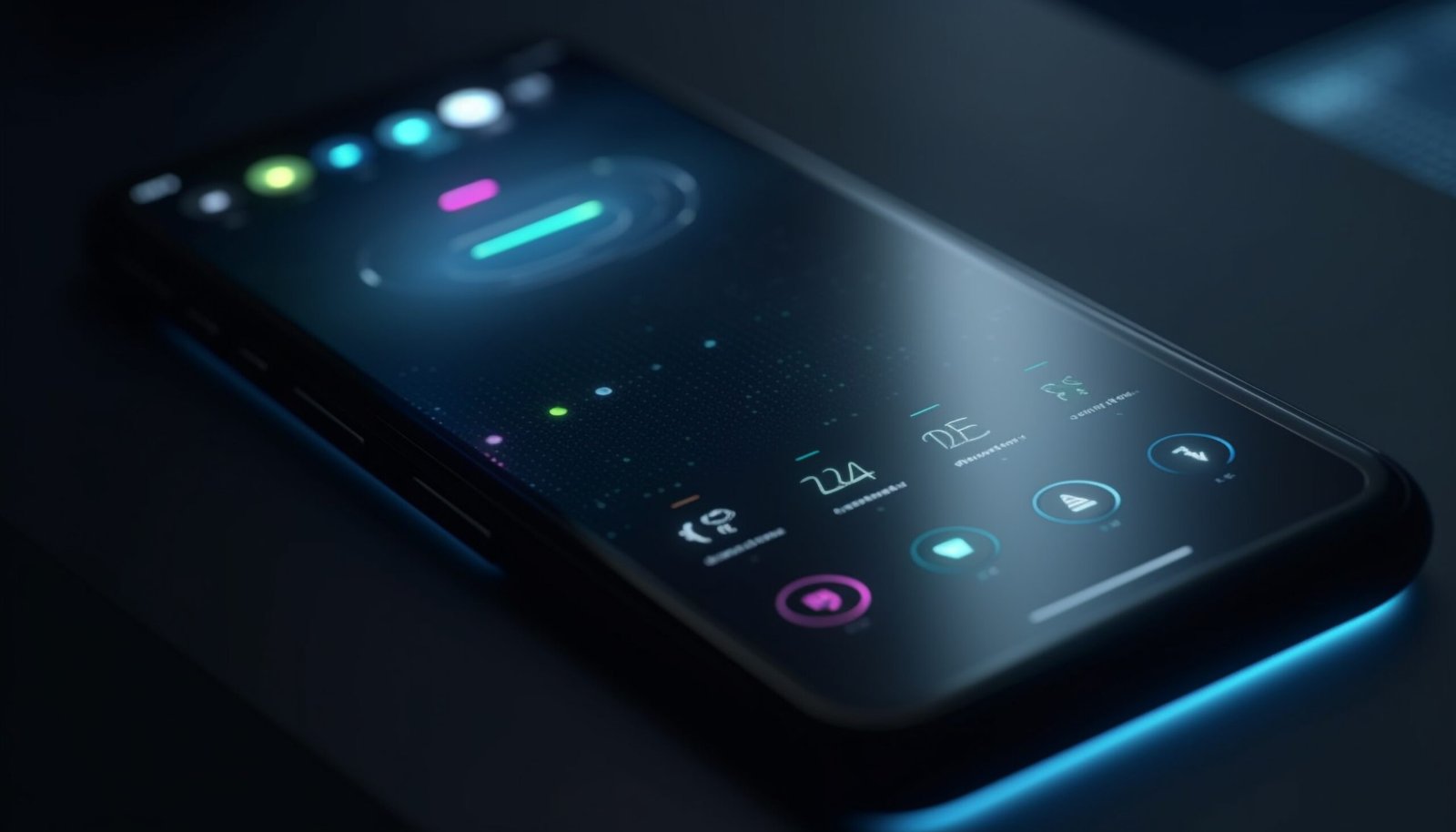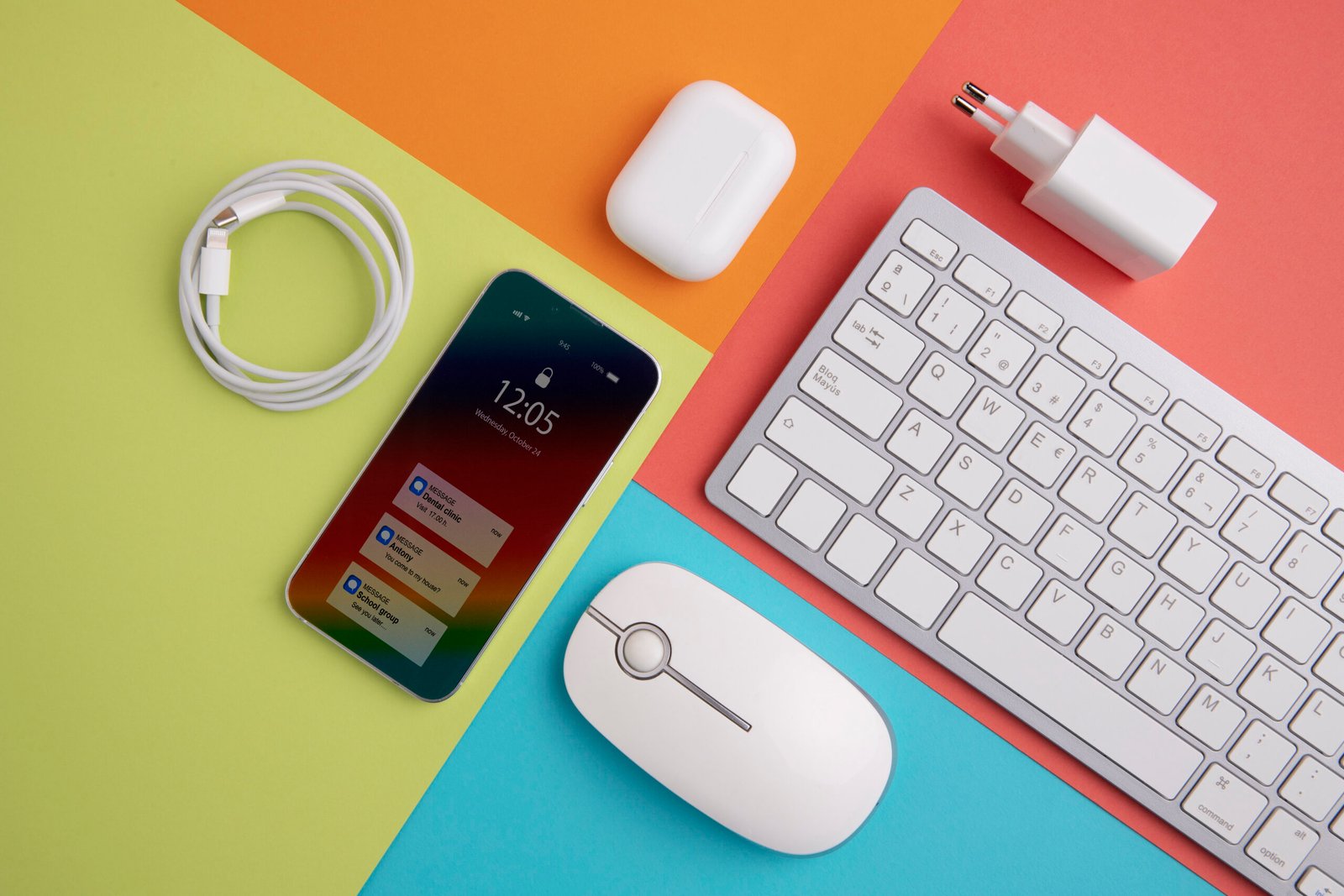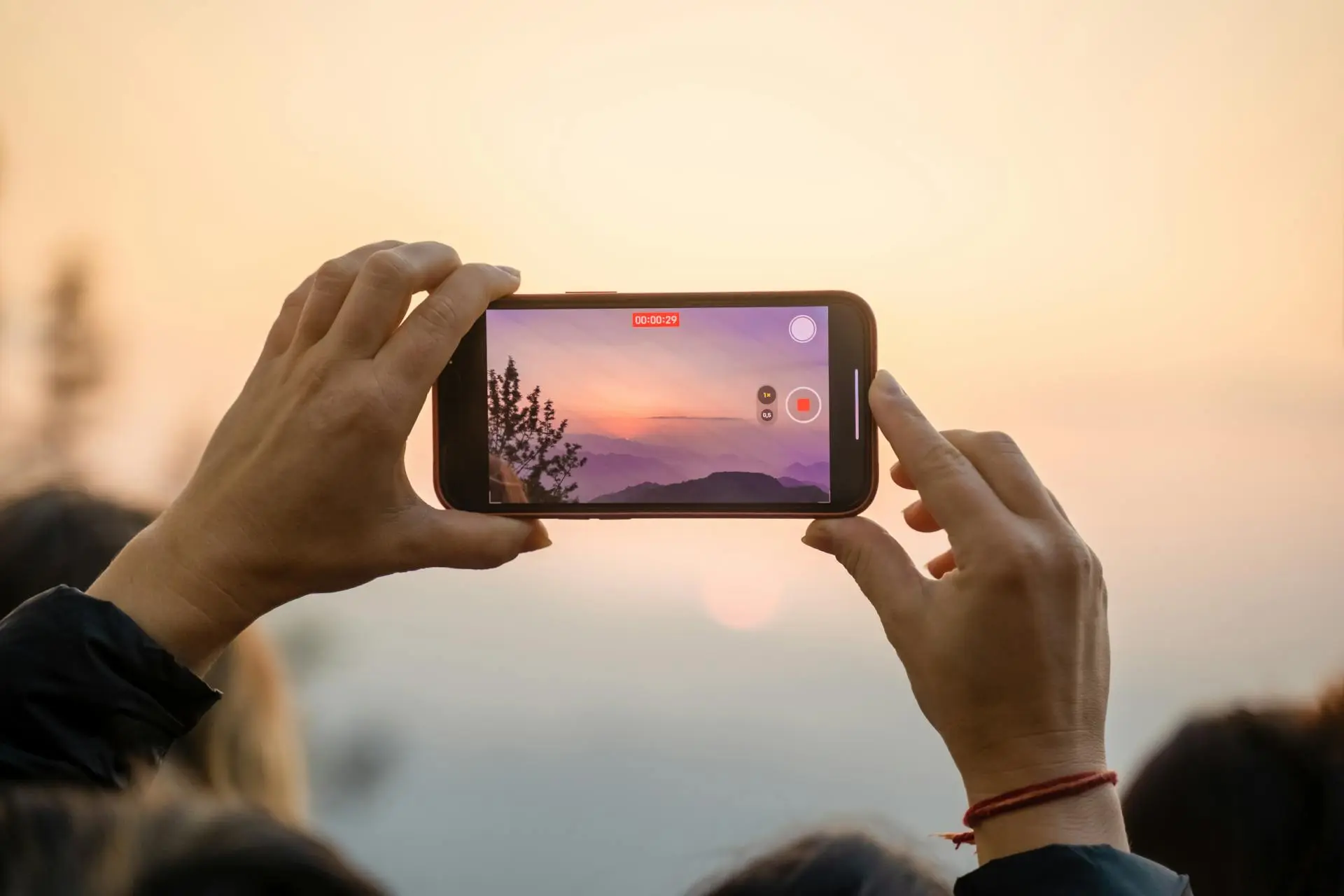Thinking about building an app or just curious about what makes some apps better than others? It’s easy to get lost in all the options out there.
Knowing how to compare features of mobile apps can really help you figure out what you need, whether you’re a user looking for the best tool for the job or a developer planning your next project.
Let’s break down what to look for.
Key Takeaways How to Compare Features of Mobile Apps
- When you compare features of mobile apps, think about how easy it is to use (UI/UX). A confusing app won’t get used, no matter how many features it has.
- Does the app actually do what it says it will, and does it do it well? Performance matters a lot.
- How safe is your information? Look into the security and privacy features the app offers.
- Can the app connect with other tools or services you already use? This can make things much smoother.
- Check if the app works offline or can sync data. This is super helpful when you don’t have internet access.

Why Comparing Mobile App Features is Crucial
So, why bother comparing mobile app features in the first place? It might seem like a lot of work, but honestly, it’s pretty important if you want to pick the right app for what you need.
Think about it – you don’t want to download something that looks cool but can’t actually do the main thing you want it to do, right?
Getting the right app means you’ll actually use it and get value from it. If an app is clunky or doesn’t have the features you need, you’ll probably just ditch it and look for something else.
That’s a waste of your time and maybe even your money if it was a paid app.
Here are the main things you should be looking at:
1. User Interface (UI) and User Experience (UX)
The first thing you notice about any app is how it feels to use. A clean interface with clear icons and logical navigation can make all the difference between an app you love and one you delete after two minutes.
Ask yourself: Is it easy to find what I need? Do the menus make sense? Can I complete tasks with minimal taps?
A well-designed UI/UX reduces friction and keeps you engaged longer. Apps like Notion, Spotify, and Duolingo are great examples—they feel intuitive and guide users naturally through each action.
On the other hand, cluttered layouts or hidden settings can quickly drive people away.
2. Core Functionality and Performance
All the fancy visuals in the world won’t matter if the app doesn’t actually work. The real test is whether it delivers on its promise—consistently and efficiently.
A note-taking app, for instance, should sync instantly and never lose your data. A fitness app should accurately track your progress without crashing mid-workout.
When comparing apps, check reviews for feedback on speed, stability, and reliability.
Performance might not always be obvious at first, but it’s what determines whether you’ll actually stick with the app long term.
3. Security and Privacy Measures
This one’s non-negotiable. With so many apps collecting user data today, understanding how your information is handled is crucial.
Look for details on encryption, two-factor authentication, and privacy policies. Does the app share your data with third parties? Can you control what’s collected?
Privacy-conscious apps like Signal or ProtonMail are becoming more popular for a reason. They prove that functionality doesn’t have to come at the expense of your personal security.

4. Integration Capabilities
An app doesn’t exist in isolation anymore it’s part of your digital ecosystem.
The best apps integrate smoothly with tools you already use. Think calendar syncs, cloud backups, or automation with platforms like Zapier.
This kind of interoperability saves time and keeps all your workflows connected.
If an app can’t integrate, you’ll likely end up juggling multiple tools that don’t communicate, which creates friction and data silos. Always check whether it supports your preferred services before committing.
5. Offline Access and Data Synchronization
A good app should work wherever you are—even without Wi-Fi. Offline functionality ensures you can stay productive during commutes, flights, or network dropouts.
Equally important is seamless synchronization once you’re back online. Apps like Google Docs or Notion handle this brilliantly, letting you pick up exactly where you left off.
When comparing options, test how well offline edits are saved and synced. Poor data handling can lead to lost work, duplicated entries, or outdated info.
6. Customization and Personalization Options
Every user has different preferences, and great apps recognize that. Whether it’s choosing dark mode, adjusting notifications, or reorganizing layouts—small tweaks make a big difference.
Personalization features not only improve comfort but can also enhance productivity by aligning the app with how you like to work.
Modern apps like Todoist or Slack let users personalize almost everything, from themes to workflows—proving that flexibility keeps people engaged.
7. Customer Support and Updates
Finally, consider how well the app is supported. Even the best-designed apps occasionally break or need tweaks.
Having responsive customer support and frequent updates shows that developers care about long-term user experience.
Check if there’s a support chat, a knowledge base, or regular version updates. Apps that go months without updates often fall behind on security patches or compatibility.
Active development is a good sign you can trust the app to evolve with your needs.
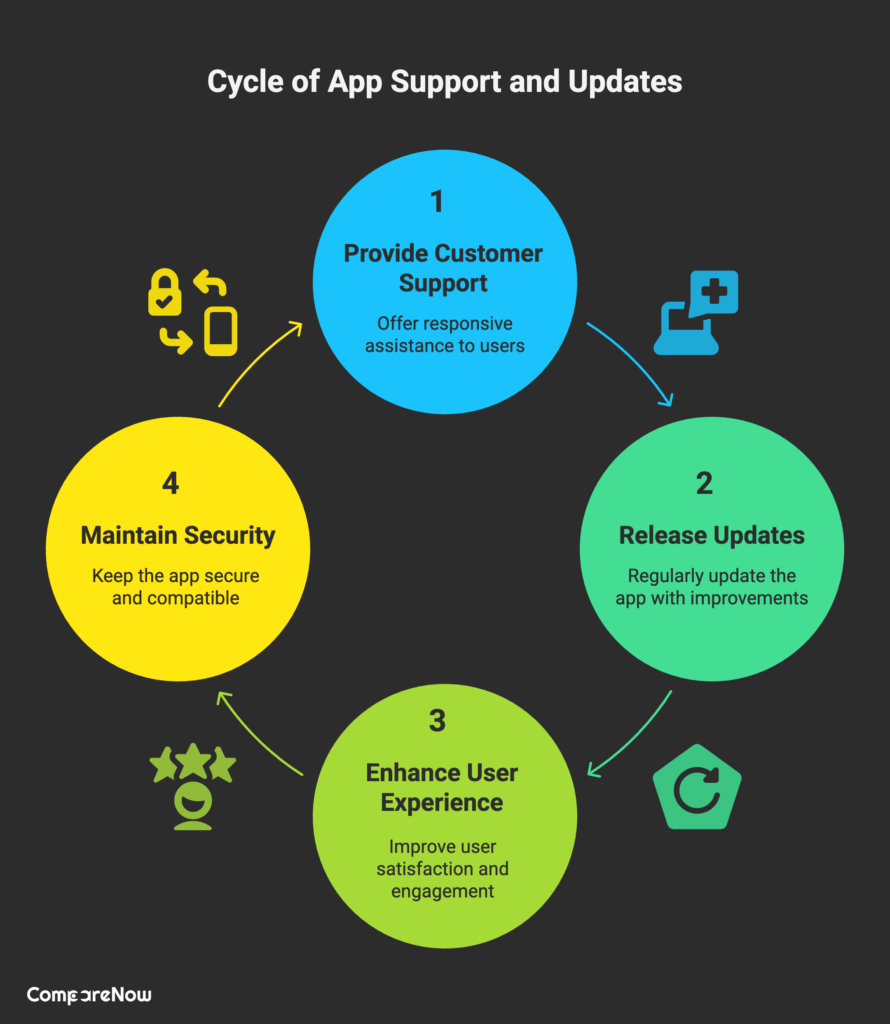
App Comparison Examples: How Top Apps Stack Up in 2025
Notion vs. Evernote: UI/UX and Ease of Use
When it comes to note-taking, Notion and Evernote both aim to help you stay organized, but their design philosophies couldn’t be more different.
Notion offers a modern, minimalist interface where you can drag, drop, and build custom layouts with pages, databases, and toggles. It feels sleek and flexible, but new users might find it overwhelming at first.
Evernote, by contrast, sticks to a traditional notebook-style UI with clear menus and folders. It’s easier for beginners but feels less customizable.
Verdict:
Choose Notion if you value customization and design freedom. Go with Evernote if you prefer a familiar structure that just works right out of the box.
Spotify vs. YouTube Music: Performance and Reliability
Both Spotify and YouTube Music are leaders in streaming, but they differ in how smoothly they perform.
Spotify is well-optimized, offering lightning-fast playback even on weak connections. Offline downloads sync quickly, and its cross-device transition (like from phone to laptop) is almost seamless.
YouTube Music, on the other hand, benefits from YouTube’s massive library great for rare tracks and remixes but it can feel heavier, consuming more data and sometimes lagging when switching networks.
Verdict:
If stability and smooth playback are priorities, Spotify wins easily. But if you crave a wider variety of tracks, YouTube Music delivers more depth.
Signal vs. WhatsApp: Security and Privacy
Messaging apps live and die by trust, and this is where Signal and WhatsApp take different paths.
Signal is built entirely around privacy it’s open-source, uses end-to-end encryption by default, and collects minimal user data. Even your metadata stays protected.
WhatsApp also offers end-to-end encryption, but being owned by Meta means it collects more metadata and links your account with your phone number, which some users dislike.
Verdict:
For pure privacy and transparency, Signal is the clear winner. However, WhatsApp remains the more practical choice if you need widespread adoption and group connectivity.
Trello vs. Asana: Integration and Workflow Flexibility
If teamwork and organization are your goals, both Trello and Asana shine, but in different ways.
Trello uses visual boards that integrate smoothly with apps like Google Drive, Slack, and Jira via Power-Ups. It’s lightweight, intuitive, and great for small teams.
Asana, meanwhile, is built for scale. It connects with enterprise tools like Salesforce and HubSpot, offers custom automation, and provides detailed reporting features.
Verdict:
Pick Trello if you want simplicity and visual workflows. Choose Asana if your projects require complex integrations and automation.
Todoist vs. Any.do: Customization and Personal Productivity
When it comes to managing daily tasks, Todoist and Any.do both help you stay on top of things — but with different philosophies.
Todoist lets you deeply customize your setup with labels, filters, color themes, and productivity tracking (Karma points). It’s ideal for users who want control and insight.
Any.do focuses on aesthetics and simplicity. The interface is beautiful and easy to use but offers fewer customization options.
Verdict:
Todoist is best for power users who like to tweak every detail of their workflow. Any.do works better for those who want a clean, no-fuss experience.
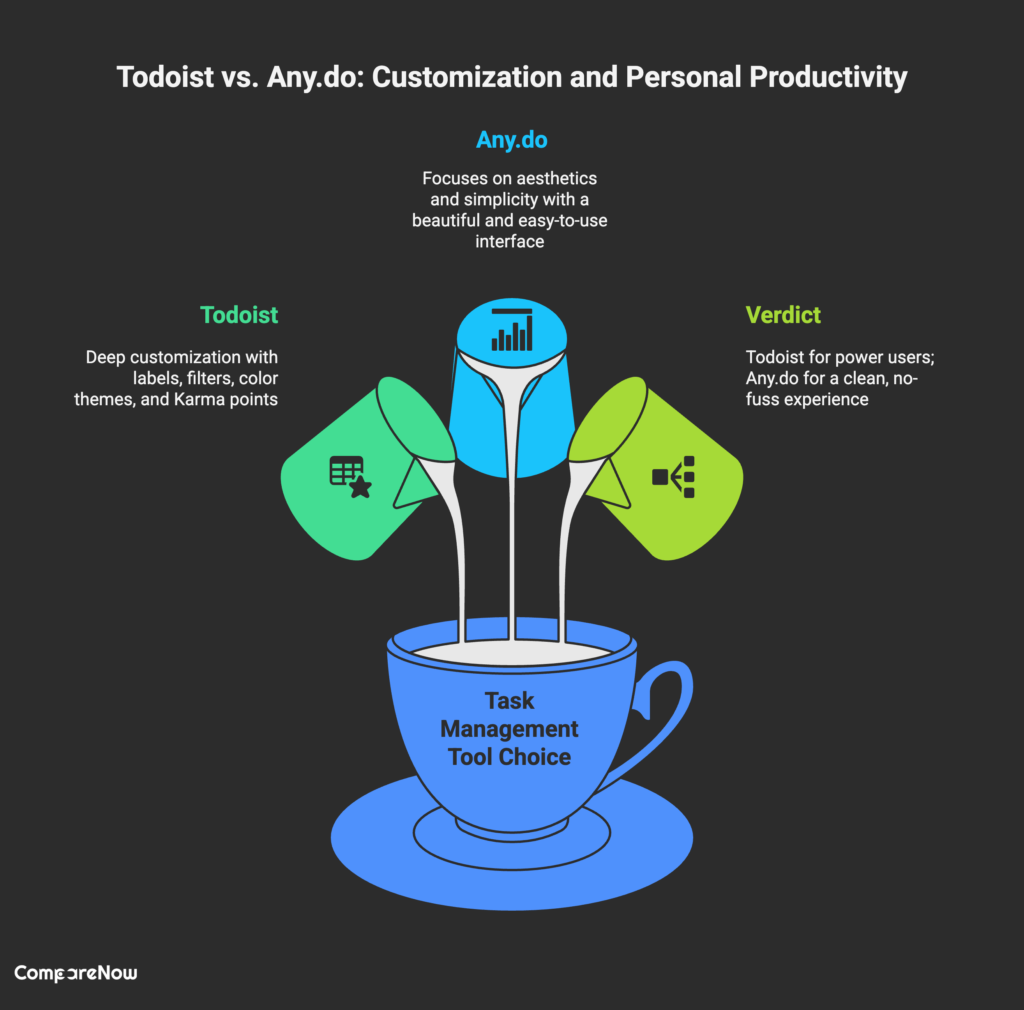
Key Features to Consider When Comparing Mobile Apps
When you’re trying to figure out which app is going to be your new favorite, or which one your business should use, you gotta look at more than just what it does.
There are a bunch of other things that make a big difference in how you’ll actually use it day-to-day.
1. User Interface (UI) and User Experience (UX)
This is basically how the app looks and how easy it is to get around. Does it feel clunky, or does it just flow?
A good UI is clean and makes sense, and a good UX means you can actually do what you want without pulling your hair out.
Think about how quickly you can find buttons, if the text is readable, and if the whole thing just feels intuitive. Nobody wants to fight with an app just to get it to work.
2. Core Functionality and Performance
This is the meat and potatoes – what the app is supposed to do. Does it do it well? Is it fast, or does it lag and freeze up?
If an app is supposed to help you manage your budget, but it takes forever to load your accounts, that’s a problem. We’re talking about how reliable it is and if it actually gets the job done without a hitch.
3. Security and Privacy Measures
This is super important. What happens to your data when you use the app? Does it feel safe? You want to know that your personal information is protected and that the app isn’t collecting more than it needs.
Look for apps that are upfront about their privacy policies and have good security features.
4. Integration Capabilities
Does the app play nice with other apps or services you already use? Maybe you want it to connect to your calendar, your cloud storage, or your social media.
If it can link up with other tools, it can make your life a lot easier and save you from doing things twice.
5. Offline Access and Data Synchronization
What happens when you don’t have internet? Some apps are useless without a connection, while others let you keep working and then sync up later.
If you’re often on the go or in places with spotty Wi-Fi, being able to use the app offline is a big deal. And when it does sync, does it do it smoothly?
6. Customization and Personalization Options
Can you make the app feel like yours? Maybe you want to change the theme, rearrange buttons, or set up specific notifications.
Apps that let you tweak things to fit your preferences usually feel better to use because they adapt to you, not the other way around.
7. Customer Support and Updates
What happens if something goes wrong? Is there a way to get help, like a support team or a good FAQ section? Also, do the developers keep the app updated with new features and bug fixes?
An app that’s regularly maintained is usually a sign that the people behind it care about keeping it running well and improving it over time.

How to Effectively Compare Mobile App Features
So, you’ve got a few app ideas and you’re trying to figure out which one is the best fit. It can feel like a lot, right? But honestly, it just comes down to a few key things.
1. Utilizing Comparison Tools and Resources
First off, don’t try to reinvent the wheel. There are tons of websites and articles out there that break down app features side-by-side.
Think of them like cheat sheets for app features. You can find charts comparing things like how fast an app loads, how much battery it uses, or even how many steps it takes to do a common task.
It’s super helpful to look at these comparisons, especially if you’re trying to decide between a native app, a web app, or maybe a hybrid one.
They often highlight the pros and cons of each approach for different features.
2. Reading Reviews and User Feedback
This is a big one. Forget what the app developers say their app does, and find out what actual people are saying. Go to the app store, look for review sites, or even check out forums.
People will tell you if a feature is clunky, if the app crashes a lot, or if something they expected just isn’t there.
Pay attention to recurring comments. If multiple people complain about the same thing, that’s a red flag. On the flip side, if everyone raves about a specific feature, that’s probably a good sign.
Remember, user feedback isn’t just about finding problems. It’s also about understanding what people love and what they find genuinely useful. That’s the stuff you want to aim for in your own app.
Picking the right mobile app can be tricky. Our guide, “How to Effectively Compare Mobile App Features,” breaks down what to look for.
We make it easy to see which apps have the tools you need. Want to find the best app for you? Check out our website to compare features side-by-side!
So, What’s the Takeaway?
Alright, so we’ve gone over a bunch of stuff about comparing mobile app features. It can feel like a lot, right? But really, it boils down to knowing what your users need and what your app is supposed to do.
Don’t get too caught up in all the tech talk. Think about what makes sense for your project and your budget.
Whether you pick a native app, a web app, or something in between, the goal is to make something people will actually use and enjoy. Keep it simple, focus on the user, and you’ll be on the right track.















